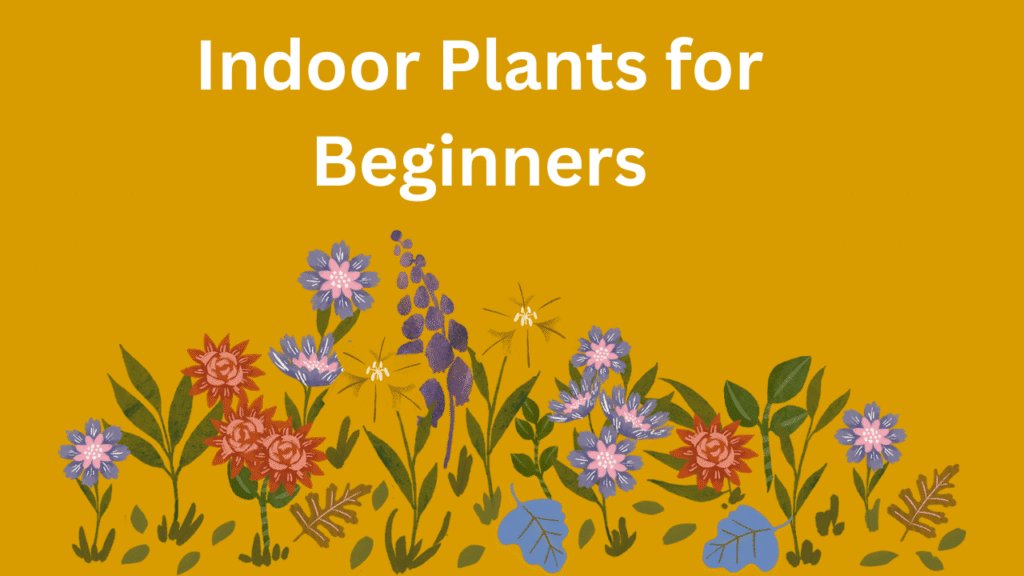Have you ever admired someone’s lush indoor jungle and wished you could create the same in your own home? Good news—you can! Growing indoor plants isn’t reserved for expert gardeners. In fact, many of the most beautiful and beneficial plants are perfect for beginners.
Indoor plants not only beautify your home but also purify the air, reduce stress, and boost your mood. If you’re new to plant care, the key is choosing beginner-friendly plants that are hardy, low-maintenance, and forgiving.
This guide will walk you through the best indoor plants for beginners, practical care tips, and step-by-step advice to help your plants thrive. Whether you live in a small apartment or a spacious home, by the end of this blog you’ll feel confident to start your own indoor plant journey.
Why Indoor Plants Are Perfect for Beginners
Before diving into plant recommendations, let’s talk about why indoor plants are such a rewarding hobby for first-timers:
- Low effort, high reward – Many indoor plants require minimal care but give maximum beauty.
- Health benefits – Indoor plants improve air quality and create a calming atmosphere.
- Affordable hobby – You can start small with budget-friendly plants like pothos or spider plants.
- Decor appeal – Plants instantly upgrade your living room, bedroom, or even your workspace.
- Easy to learn – Plant care teaches patience, responsibility, and observation—all at your own pace.
Best Indoor Plants for Beginners
Here are the top plants every beginner should consider. They’re tough, beautiful, and easy to maintain.
1. Snake Plant (Sansevieria)
- Why it’s perfect for beginners: Almost indestructible; thrives in neglect.
- Care tips: Water once every 2–3 weeks. Tolerates low light, making it perfect for dark corners.
- Benefit: One of the best plants for air purification.
2. ZZ Plant (Zamioculcas zamiifolia)
- Why it’s perfect for beginners: Glossy, attractive leaves and minimal watering needs.
- Care tips: Can survive in low to medium light. Water monthly.
- Benefit: Great for busy people who may forget to water.
3. Pothos (Devil’s Ivy)
- Why it’s perfect for beginners: Fast-growing and forgiving if you over- or underwater.
- Care tips: Place in bright, indirect light. Water weekly.
- Benefit: Easy to propagate—just cut a stem and place in water!
4. Spider Plant
- Why it’s perfect for beginners: Hardy and kid/pet-friendly.
- Care tips: Water once a week and keep in medium light.
- Benefit: Produces baby “spiderettes” that you can repot easily.
5. Aloe Vera
- Why it’s perfect for beginners: Stylish succulent that doubles as a natural remedy.
- Care tips: Needs bright, indirect sunlight. Water sparingly—every 3 weeks.
- Benefit: Aloe gel can soothe burns and skin irritations.
6. Peace Lily
- Why it’s perfect for beginners: Elegant white blooms and adaptable care.
- Care tips: Keep soil slightly moist. Place in low to medium light.
- Benefit: One of the best air-purifying plants according to NASA studies.
7. Lucky Bamboo
- Why it’s perfect for beginners: Grows in soil or water, making it versatile.
- Care tips: Keep in filtered water and indirect sunlight.
- Benefit: Considered a symbol of good fortune.
Step-by-Step Guide: How to Care for Indoor Plants as a Beginner
Starting with indoor plants can feel overwhelming, but breaking it down into steps makes it simple.
Step 1: Choose the Right Plant
- Beginners should stick to hardy plants like snake plants, pothos, or spider plants.
- Match plant type to your environment (low light vs. bright rooms).
Step 2: Pick the Right Pot & Soil
- Always use pots with drainage holes to avoid root rot.
- Choose soil designed for houseplants or succulents depending on your plant.
Step 3: Understand Watering Needs
- Overwatering is the #1 beginner mistake.
- Rule of thumb: Water only when the top inch of soil is dry.
Step 4: Light Requirements
- Place plants near windows but avoid harsh direct sunlight.
- Low-light plants like ZZ plants and snake plants can thrive in darker rooms.
Step 5: Regular Maintenance
- Wipe leaves with a damp cloth to remove dust.
- Trim yellow or dead leaves to encourage new growth.
- Rotate pots every few weeks so plants grow evenly.
Benefits of Indoor Plants for Beginners
When you start growing indoor plants, the benefits go beyond decoration:
- Cleaner air: Plants filter toxins and improve oxygen levels.
- Stress relief: Caring for plants lowers anxiety and improves mood.
- Better sleep: Plants like peace lilies and lavender promote relaxation.
- Productivity boost: Greenery in workspaces helps concentration and focus.
- Connection to nature: Even if you live in a city apartment, plants bring nature indoors.
Common Mistakes Beginners Make (And How to Avoid Them)
Even easy plants can struggle if you make these common mistakes:
- Overwatering – Check soil moisture before watering.
- Too much sunlight – Some plants burn in direct sun.
- Wrong potting mix – Succulents need sandy, well-draining soil.
- Ignoring repotting – As plants grow, give them fresh soil and space.
- Neglecting pests – Watch out for small bugs like gnats or spider mites.
Pro tip: Don’t panic if a leaf turns yellow. It’s natural for older leaves to die off.
Indoor Plant Styling Tips for Beginners
Not only do plants improve your health, but they also upgrade your home décor. Here’s how to style them:
- Use hanging planters for pothos and ivy in small spaces.
- Place tall plants like snake plants or fiddle leaf figs in empty corners.
- Group plants together for a jungle vibe.
- Use decorative pots to match your interior design.
- Mix plant types—combine succulents, leafy greens, and flowering plants for variety.
A Beginner’s Starter Kit for Indoor Plants
If you’re ready to get started, here’s what you’ll need:
- A couple of beginner-friendly plants (pothos, ZZ plant, spider plant).
- Pots with drainage holes.
- Indoor potting soil mix.
- A small watering can with a narrow spout.
- Plant fertilizer (use once every 4–6 weeks).
- A soft cloth for cleaning leaves.
With this simple kit, you’ll have everything you need to grow healthy plants indoors.
FAQs About Indoor Plants for Beginners
1. What is the easiest indoor plant for beginners?
Snake plants, pothos, and ZZ plants are the easiest—they survive neglect and adapt to most conditions.
2. How often should beginners water indoor plants?
Most indoor plants need watering once a week, but always check the soil first.
3. Can beginners grow plants without much sunlight?
Yes! Snake plants, ZZ plants, and peace lilies thrive in low light.
4. Which indoor plants are safe for pets?
Spider plants, parlor palms, and some ferns are pet-friendly options.
5. Do beginners need fertilizer for indoor plants?
Yes, but only occasionally. Use indoor plant fertilizer every 4–6 weeks during the growing
Conclusion
Starting an indoor plant journey as a beginner is one of the best lifestyle decisions you can make. Not only are these plants beautiful and affordable, but they also improve air quality, reduce stress, and bring natural energy into your home.
From hardy snake plants and ZZ plants to stylish peace lilies and pothos, there’s an indoor plant for everyone—even if you’ve never gardened before.
🌱 Ready to grow your green thumb? Explore more plant care guides, tips, and inspiration on Green Plant Zone today and transform your home into a lush paradise.

Hi, I’m the creator of Green Plant Zone, a space dedicated to plant lovers. I share tips on indoor and outdoor gardening, plant care guides, and eco-friendly living. My mission is to help you grow healthier, happier plants and bring more greenery into everyday life.
